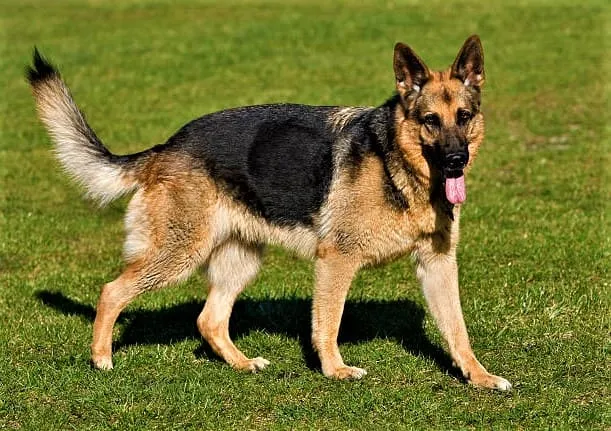Do German Shepherds Get Cold - Although German Shepherds come from regions with cold climates in Europe, they are also cold and may be at risk for hypothermia and frostbite if left in the cold for too long. German Shepherds are better able to cope with the cold than other dogs thanks to their double coat, which helps them stay warmer and drier than other dogs. It's important to note that while long-haired German Shepherds may look fluffier and appear to perform better in the cold, most of the time these dogs have only one coat, rather than the double coat of the standard AKC German Shepherd.

Dog jackets or vests are not usually required for a double coat breed such as the GSD. The GSD coat is actually two layers and is the same style you can find on any other dog that can be left out in the cold for a while.
While the rough outer layer acts as protective hair, repelling moisture and preventing cold from entering the body. The first layer ensures that rain and snow don't stick to the coat and make the dog cold. The undercoat will keep your dog warm during the colder months and also allow for adequate temperature control in the heat. The double coat consists of two types of fur, which provide additional thermal insulation, make the pet waterproof and keep him warm in the cold months of the year.
Some dogs also have fur that keeps them warm even in cold weather. Dog jackets come in many shapes and sizes and will not only keep your dog warm in the cold winter, but are also weatherproof, waterproof and comfortable. Nowadays, there are many jackets, coats and other clothing designed specifically for dogs in the winter.
If you live in an area with very cold winters, you can keep your young or old dog warm with a vest while you go outside. If you live in a cold climate and often take your dog outside to work, it will adapt to the cold over time. If the temperature drops too low, it will be difficult for your dog to regulate the temperature. That's why it's important to always monitor your dog and figure out their unique level of cold tolerance.
While a dog's body temperature may remain at a normal level, other parts of his body, such as his paws, are more prone to colds. Generally, anything below 20 degrees Fahrenheit is dangerous for the average dog, so be sure to keep an eye on him and try to find out his tolerance level. Many people use a threshold of 32 degrees Fahrenheit, below which dogs cannot be outside for more than 30 minutes at a time.
In temperatures below 15 degrees Fahrenheit, dogs tend to hide in areas with at least some wind protection. This is especially true in temperatures below 40 degrees Fahrenheit, which can harm nearly all dog breeds. Generally, any dog will love this if the temperature is not too cold.
There are other factors to consider when determining how cold it is for your dog. To help determine how much cold your dog can tolerate, it's important to know each dog's hardiness level. It's important to know what temperatures are too cold for your shepherd and take appropriate action at the first sign of a cold to ensure your dog is safe.

You can assume that your dog will tolerate the cold without problems. Knowing your German Shepherd's cold tolerance and preparing for when temperatures get too cold can help you take care of your dog. Safe handling of German Shepherds outdoors in sub-zero temperatures requires common sense regarding sub-zero conditions, recognition of stressful body language, and respect for your pet's basic health and well-being at home. Some shepherds should not be exposed to extreme cold temperatures due to their reduced endurance capacity.
You can expect your longhaired Sheepdog to cool down faster and be less weatherproof than shorter varieties. With only guard hairs for protection, long-haired sheepdogs are much more vulnerable to the cold because they don't have the dense undercoat needed to insulate them. The double coat is one of the most distinctive features of cold climate dog breeds such as German Shepherds, Siberian Huskies, Newfoundlands, Samoyeds, and so on. These two layers of protection - the top coat and undercoat - allow them to thrive in freezing conditions. temperature. An option like the SCPET Fog winter coat can add an extra layer of protection when your dog needs to stay out in the cold.
If the temperature does drop below expected, you can always add another doggy sweater to your GSD's thick coat. Dog clothing is generally not needed with GSD unless temperatures reach extremely low levels or your dog is particularly sensitive to cold.
If your dog seems to be shivering when it gets colder, you need to keep him at home or give him extra layers of protection. If you are walking your dog, always look for signs that she is cold. If the weather turns bad or drops below -5, you need to take care of your dog because he is cold. Dogs can get very cold if they don't have shelter from the cold.
3/10

